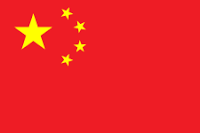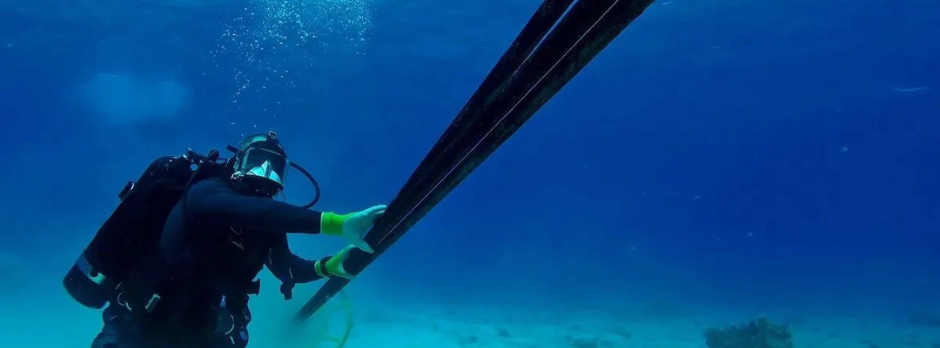1. What Is a Submarine Fiber Optic Cable?
To connect Vietnam’s internet to the rest of the world, a vast system of fiber optic cables - both terrestrial and undersea - is indispensable. Although satellite internet is an alternative, up to 99% of global data traffic still relies on submarine fiber optic cables.
A submarine cable is a telecommunications cable with a glass or plastic core that transmits data via light signals and is laid along the seabed.
For Vietnam, submarine cables are the lifelines of international connectivity. However, in recent years, as internet demand has surged, cable outages have occurred more frequently and with greater impact. To improve network reliability, the Ministry of Information and Communications (MIC) has announced plans to enhance internet infrastructure - expanding terrestrial networks and adding 10 new submarine cable systems.
2. Vietnam’s Submarine and Terrestrial Fiber Optic Cable Systems (Updated 2025)
2.1. Three Terrestrial Fiber Optic Cables Crossing Vietnam’s Borders
- VSTN Cable System: Developed and invested by VNPT, the VSTN officially entered operation on August 4, 2025, marking a major milestone as Vietnam’s first self-owned international terrestrial cable system. The cable stretches 3,900 km, providing a direct land connection from Vietnam (Da Nang) to Singapore, passing through Laos, Thailand, and Malaysia. The system has a designed total capacity of 4 Tbps, upgradeable to 12 Tbps or more.
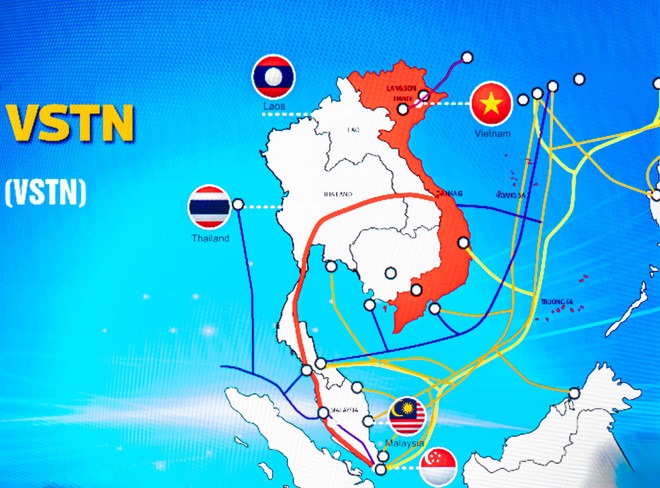
- Vietnam–China Fiber Optic Cable System: Connects directly with major Chinese telecommunications operators, with a total capacity exceeding 120 Gbps.
- Vietnam–Laos and Vietnam–Cambodia Fiber Optic Cable Systems: Provide direct connections to most major telecom operators in Laos and Cambodia, with a total capacity of over 200 Gbps.
2.2. Vietnam’s International Submarine Cable Systems
According to TeleGeography, in addition to terrestrial systems, Vietnam currently operates seven submarine cables, with two more under construction. Let’s take a closer look at each:
2.2.1. SMW-3 (SEA-ME-WE 3)
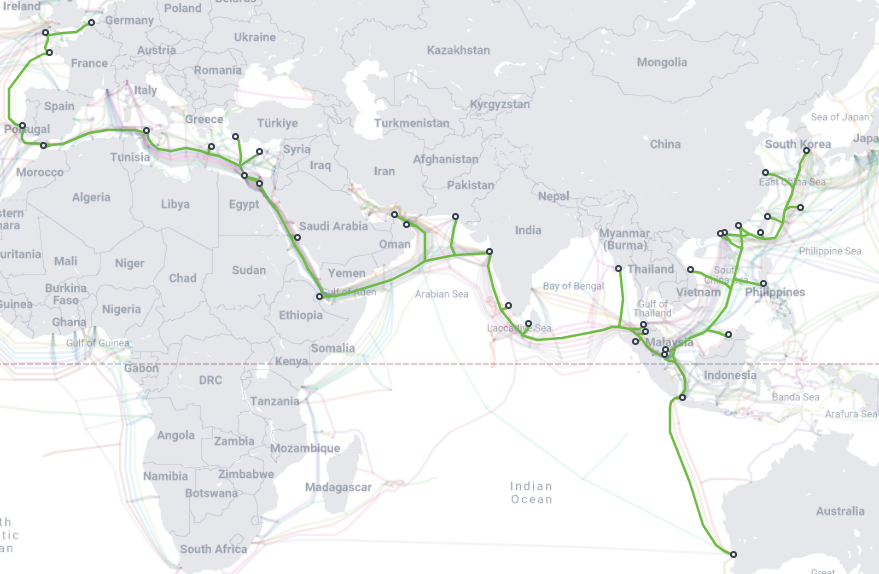
- RFS: September 1999
- Length: 39,000 km
- Capacity: 320 Gbps
This is the longest submarine cable system in the world, stretching across many countries in Southeast Asia, the Middle East, and Western Europe. It connects Vietnam with more than 30 countries worldwide, including Hong Kong, Singapore, China, and Japan. In Vietnam, the SMW-3 cable lands in Da Nang. This cable line provides a stable transmission speed and is rarely affected by natural conditions or human activities.
2.2.2. AAG (Asia-America Gateway)

- RFS: November 2009
- Length: 20,000 km
- Capacity: 2.88 Tbps
AAG is the first cable system connecting Southeast Asia and the United States, linking Vietnam with Malaysia, Singapore, Thailand, Brunei, Hong Kong, the Philippines, and the United States. In Vietnam, the AAG cable lands in Vung Tau.
This is considered Vietnam’s main backbone cable as most Vietnamese internet service providers utilize it. When a cable cut occurs, access to Google, YouTube, Facebook, or websites hosted in the U.S. is almost paralyzed.
2.2.3. APG (Asia Pacific Gateway)
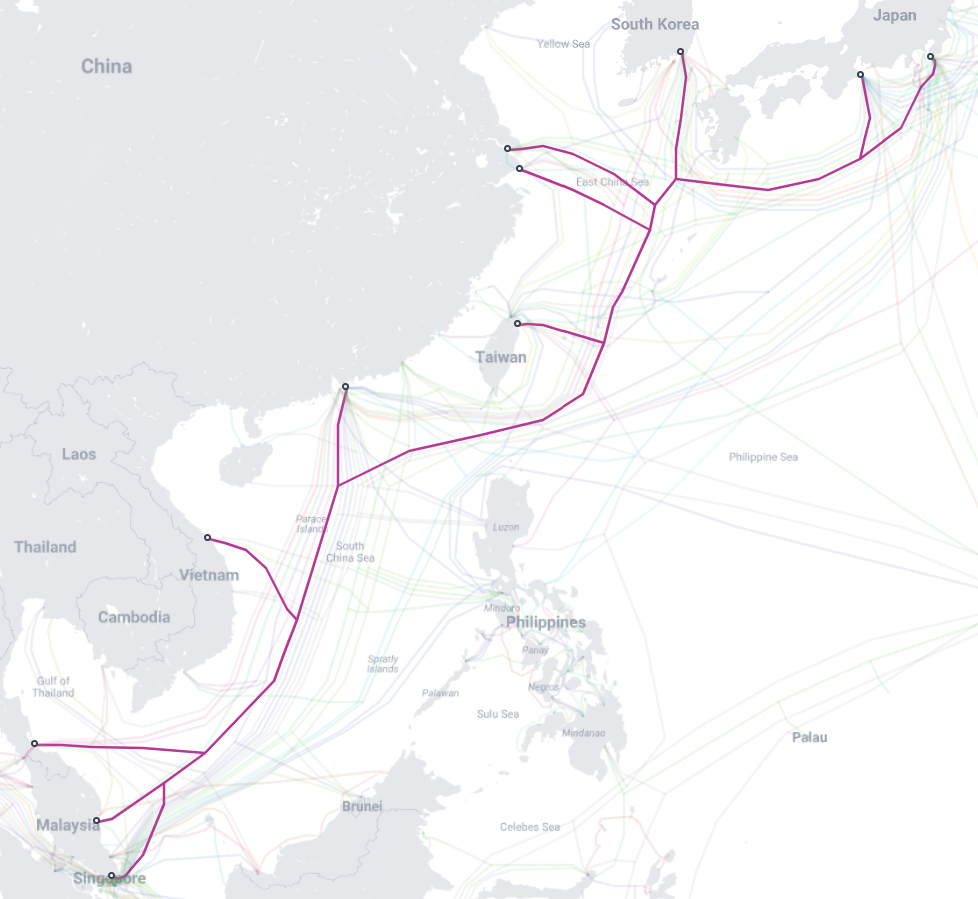
- RFS: November 2016
- Length: 10,400 km
- Capacity: 54.8 Tbps
This is the largest-capacity active cable system in Asia. Since being put into operation, it has helped Vietnam reduce its dependence on the AAG cable. As a result, international connection speeds have been significantly improved. The APG cable lands in Da Nang, connecting Vietnam with China, Hong Kong, Japan, South Korea, Malaysia, Taiwan, Thailand, and Singapore.
2.2.4. AAE-1 (Asia Africa Europe-1)
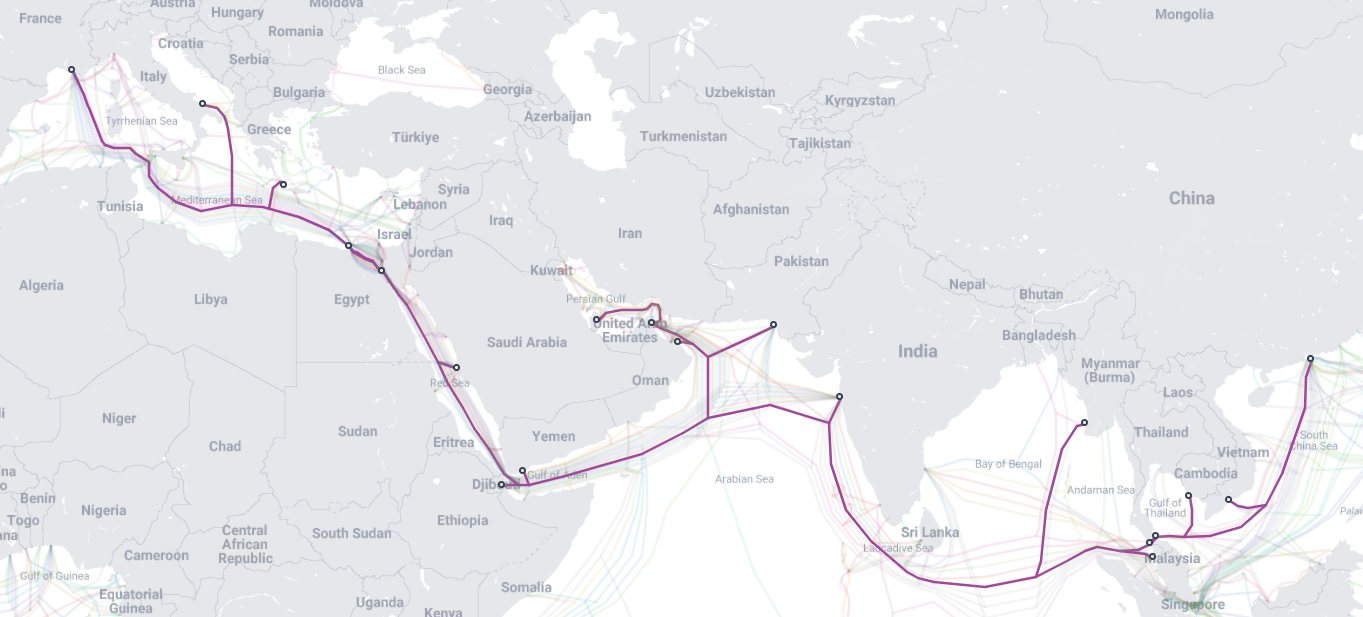
- RFS: June 2017
- Length: 25,000 km
- Capacity: 2.5 Tbps
The AAE-1 cable connects countries across Asia, Africa, and Europe, including Hong Kong, Vietnam, Cambodia, Malaysia, Singapore, Thailand, India, Pakistan, Oman, the United Arab Emirates, Egypt, Greece, Italy, and France. The cable lands in the city of Vung Tau.
2.2.5. TGN-IA (Tata TGN Intra-Asia / Liên Á)
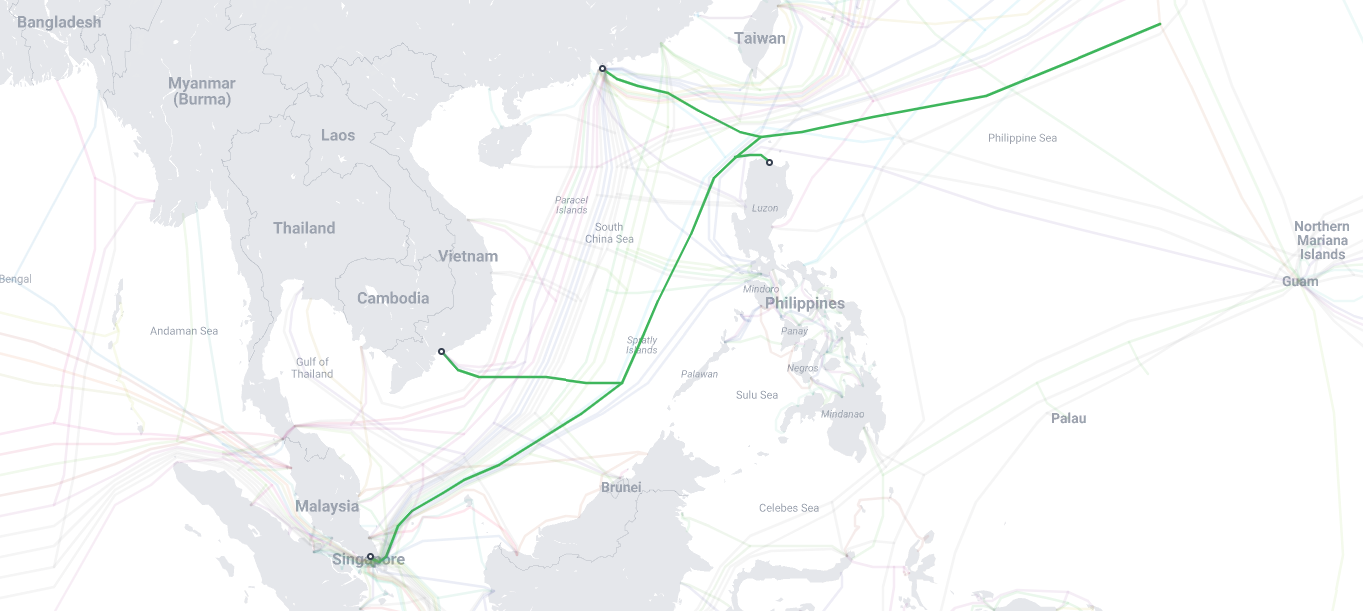
- RFS: March 2009
- Length: 6,700 km
- Capacity: 3.84 Tbps
TGN-IA connects countries and territories including Singapore, Hong Kong, Japan, the Philippines, Vietnam, and Guam. In Vietnam, the Liên Á cable lands in Vung Tau City.
2.2.6. ADC (Asia Direct Cable)
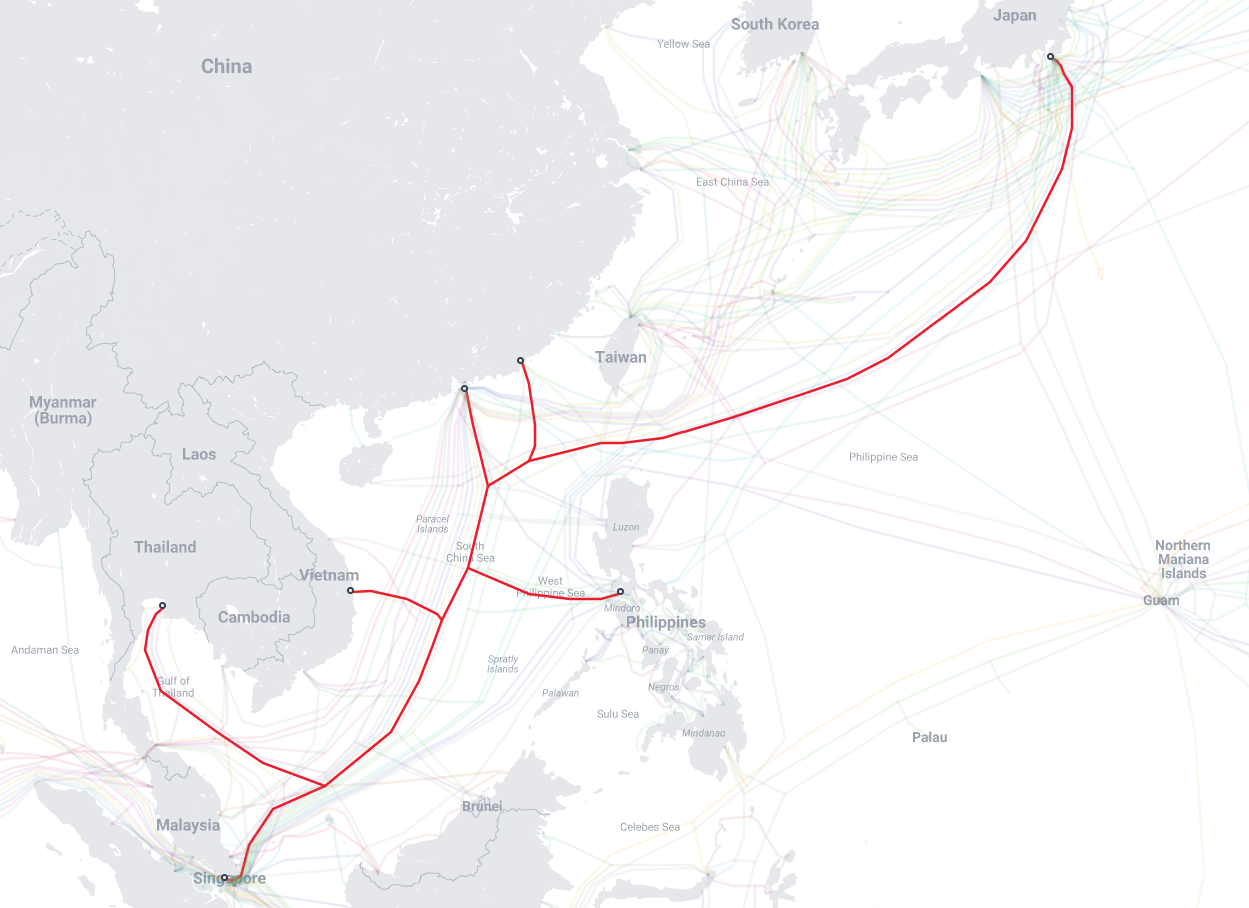
- RFS: December 2025
- Length: 9,988 km
- Maximum capacity: 50 Tbps - equivalent to 125% of the total international connection capacity of the five submarine cable systems: IA, AAE-1, APG, AAG, and SMW-3.
The ADC cable has its Vietnam landing point in Quy Nhon City. Put into operation by Viettel Networks in early April 2025, this system connects Vietnam with 6 countries and territories: Japan, the Philippines, China, Hong Kong, Singapore, and Thailand. It is the submarine cable system with the largest bandwidth capacity and fastest transmission speed in Vietnam to date.
2.2.7. SJC2 (Southeast Asia–Japan Cable 2)
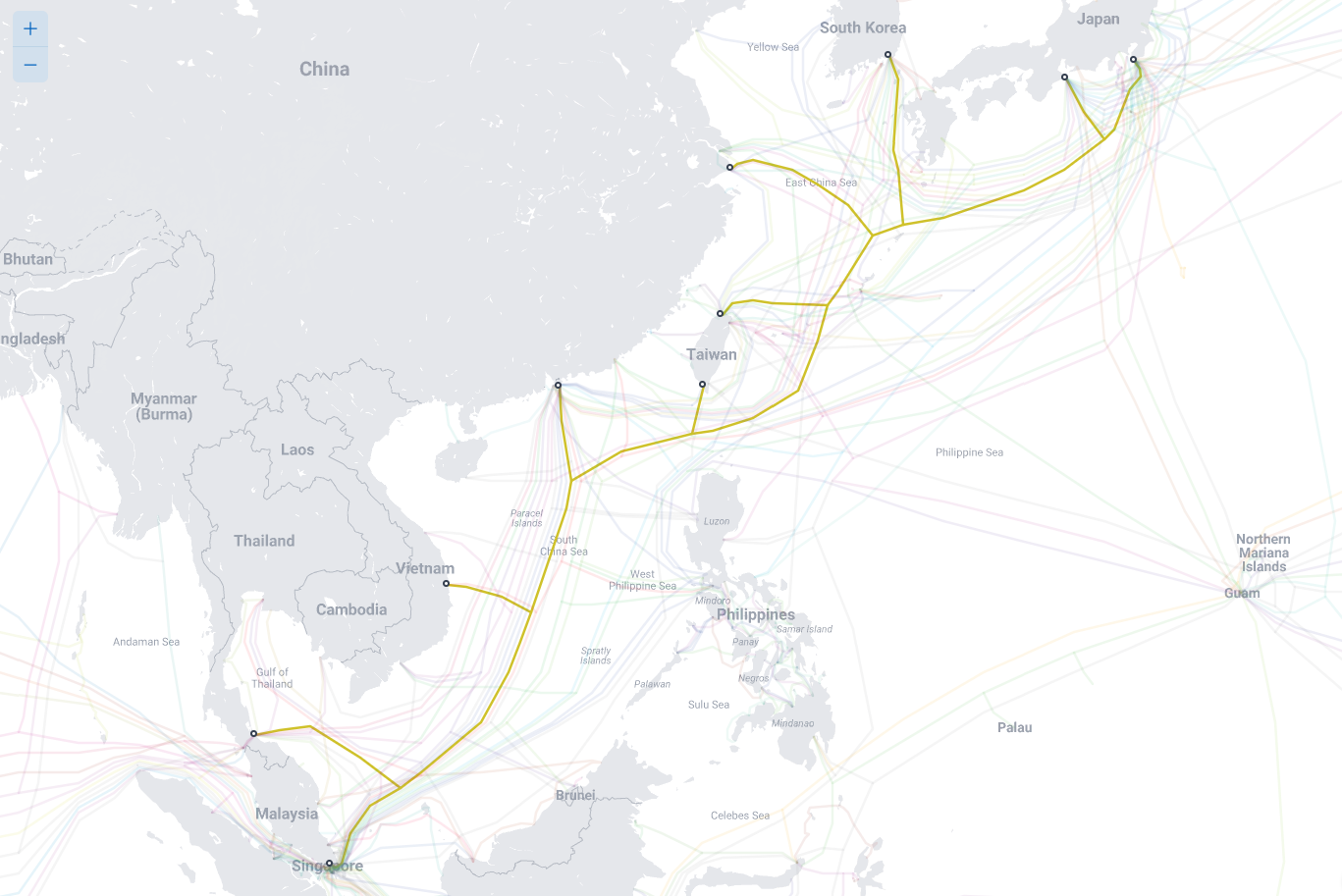
- RFS: June 2025
- Length: 10,500 km
- Capacity: 126 Tbps
The Southeast Asia-Japan 2 (SJC2) submarine cable system was announced by NEC to begin operation in July 2025. The main trunk connects Singapore, Hong Kong, China, and Japan. Additionally, it extends branches to Vietnam, Thailand, and South Korea. In Vietnam, the landing point of this cable is located in Quy Nhon. SJC2 is the newest, most advanced, and highest-capacity submarine cable system to be operated by VNPT.
In addition to the 7 submarine cable systems currently operating day and night to help us connect and eliminate geographical distances, Vietnam also has the TVH (Thailand - Vietnam - Hong Kong) cable system, which has been in operation since November 1996 with a capacity of 565 Mb/s, and 2 systems under construction:
- Asia Link Cable (ALC) (2027): The ALC submarine cable system, 7,200 km in length, is expected to be completed in the third quarter of 2025. ALC will land in Da Nang and connect Vietnam, Singapore, the Philippines, Malaysia, China, Hong Kong, and Brunei.
- Vietnam–Singapore Cable System (VTS) (2027): This cable system directly connects Vietnam (Vung Tau) with Singapore (passing through Cambodia, Thailand, and Malaysia) and is expected to be completed in the second quarter of 2027.
The above are the latest updates on Vietnam’s submarine and terrestrial fiber optic cable systems that are currently in operation or under development. Compared with the rest of the world, our internet cable network still has much room for growth to meet the ever-increasing connectivity demands of users. Therefore, the MIC has recently approved the Strategy for the Development of Vietnam’s International Fiber Optic Cable System to 2030, which aims to deploy and put into operation at least 10 new submarine cable systems and at least 2 new international terrestrial cable routes.



